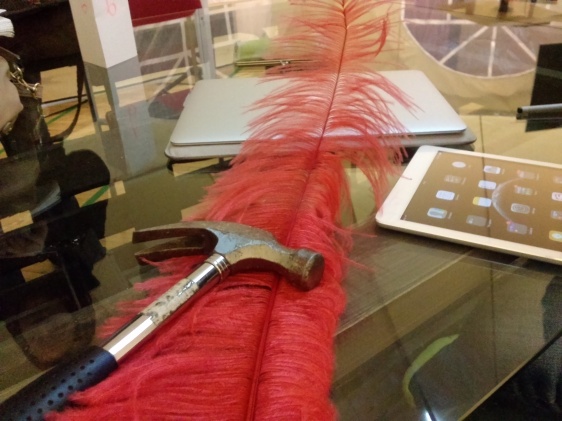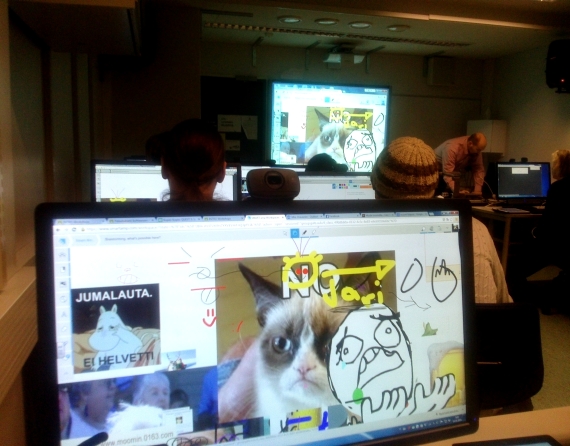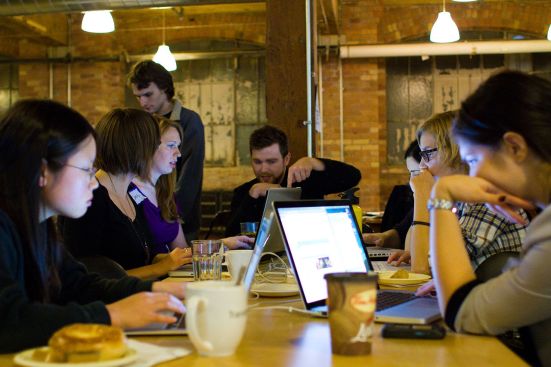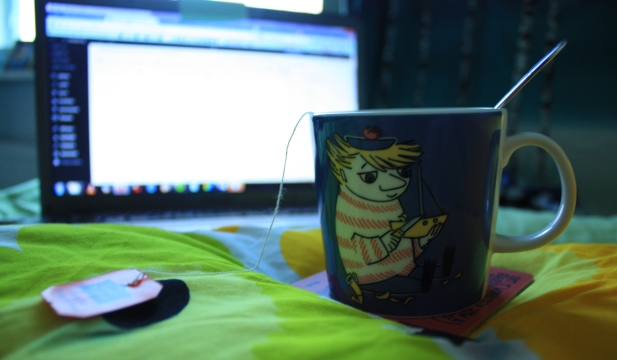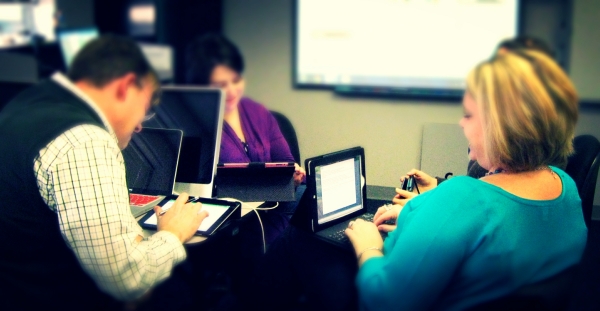The word ‘creative’ always draws my attention. Wherever I hear about “creative education” or “creative learning” I got interested and want to know more. The word itself is nice and it’s cool to say I want to be creative, learn creatively and increase creativity in school. But what does it really mean?
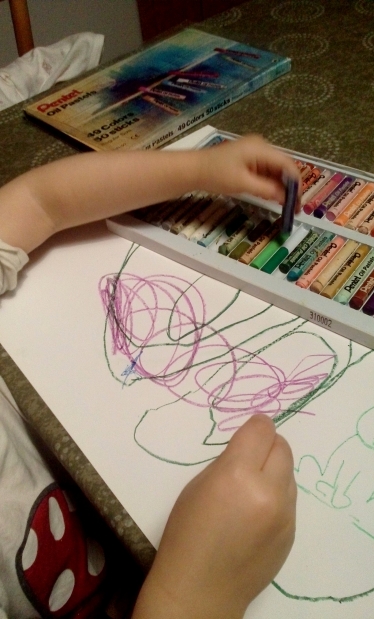
Drawing with my niece 🙂
For me, learning creatively means using arts, music, free writing and other ways to express oneself in support of learning. Creative learning includes also problem solving and thinking on one’s own. I think that when people can actively think and act themselves they learn better than when they are just forced to do something or when the problems are solved for them. I’m specially interested in how people can learn creatively and how it could be taken more into account in schools. I bet several researchs on this theme exist, for example Sylvain Moreno from York University has found out that there is a connection between music training and children’s verbal intelligence.
On the lecture (the 2nd October) we spoke about the future and how learning and teaching can change. Essi told us about the four future’s visions which are:
1. MOOCs
2. Seemless learning
3. Crowd learning
4. Gamification
MOOCs (massive open online courses) are available for everyone, some of them are free and some of them may cost something. I like the idea of MOOCs because (almost) everyone can take part in them and it doesn’t matter if you live far away from the lecturer. MOOCs offer collaboration in forms of peer support and group discussions – though it’s not always possible to organize them since there can be hundreds of participants in one course. Also evaluation and assessment from peers is often available. So, MOOCs are a good and motivational way to study interesting things on own time (although I still prefer face-to-face courses if possible!). I got interested and started to browse some courses on edx but then I thought I already have enough work with my current studies. 😀 maybe I’ll try MOOCs in the future!
Seemless learning is an interesting approach. It means that learning can happen everywhere – not only in school. I agree with that because obviously people learn outside of school too. For example hobbies, interacting with other people and simply living teach us a lot. Seemless learning, thus, combines formal and informal learning. Cool thing about seemless learning is that when you have a flow you don’t have to stop working even though the school day is over. Nowadays it’s possible because many people have their own devices (like mobile phones or tablets) where the works can be saved and continued afterwards. I really agree that when you have a flow you should use it!

CC2.0 – woodleywonderworks
Crowd learning says that every person has an ownership to their own knowledge and that people can learn from everyone. Crowd learning means that we can gather the knowledges of many people and combine them into one huge database. For example Wikipedia and Forvo are examples that Essi mentioned on the lecture. Essi also said that maybe seemless learning and crowd learning can be thought as collaborative learning and I think so too. In my opinion, crowd learning is an advanced level of collaboration. On the lectures we can collaborate and discuss with each other but on Wikipedia and Forvo etc. the knowledge is published and expanded for everyone to see. Of course crowd learning emphasizes that learners are responsible for their own learning – we can’t believe in everything that’s written on, for example, Wikipedia. I like the idea of combining different knowledge and sharing it with others because it enhances everyone’s thinking and knowledge. And, with nowaday’s technology, crowd learning is easy to organise.
Then, finally, a few words about gamification. It’s a really interesting approach and I want to find out more of it! Gamification is not only fun and creative, but it really is an effective way of learning (that’s what was said in the lecture). I really like the idea that learning can be fun – I like to laugh, and if something can be fun yet effective, why not to make it so? In gamification there are clear goals and clear strategies which make the learning more logical and motivational for the students. On this intro course we actually had kind of gamification experience because we collected XP points on Jari’s ICT workshops. 😀 And, yes, it was fun and motivational! Gamification can be used as a part of traditional learning or totally new concepts of learning. Virtual worlds (like SecondLife) are examples of totally new and different learning environments.
I think it would be effective to use these four approaches as a part of education in the future. They are not going to take the place of traditional learning but maybe they could be used to enrich the original school system. Finally, I want to present our awesome group work! It’s made during the jigsaw session (3rd October) and our group wanted to point out that learning can really be fun and creative! You can see our great and maybe a little bit Fridayish invention above. It’s named “The Friday Incarnation of Mossy Wilderness (of Kallio)” and it’s a learning environment full of fun. The idea is that the learner can use all the things in support of studying and after studying he/she can play and even eat chocolate as a reward. Yay! That jigsaw session was one of the most funniest lessons ever in my school history. 😀
Finally, I want to present our awesome group work! It’s made during the jigsaw session (3rd October) and our group wanted to point out that learning can really be fun and creative! You can see our great and maybe a little bit Fridayish invention above. It’s named “The Friday Incarnation of Mossy Wilderness (of Kallio)” and it’s a learning environment full of fun. The idea is that the learner can use all the things in support of studying and after studying he/she can play and even eat chocolate as a reward. Yay! That jigsaw session was one of the most funniest lessons ever in my school history. 😀

